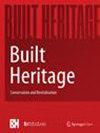Identifying disappeared historic buildings of port of Callao using georeferencing
Q1 Arts and Humanities
引用次数: 0
Abstract
Abstract The port of Callao is important for its varied historical and archaeological heritage, which includes several military buildings that were the main actors and witnesses of the colonial era of Peru (from the 16th century to the country’s independence from Spain early in the 19th century). Despite the studies that have been carried out on the basis of documents and some eventual archaeological excavations, the port’s main monument, namely, the Real Felipe Fortress, continues to hide very important information that could be used to understand the role that the fortress played in numerous historical events throughout the centuries. The main contribution of this study is the use of photogrammetry software and a Geographic Information System (GIS) to examine the Real Felipe Fortress. In this way, the nature of the atypical construction within the fortress is determined. As a result, it is possible to accurately establish the location of the defensive wall that surrounded the ancient city of Callao, as well as its first churches, whose records were lost after being destroyed by the 1746 earthquake and tsunami in Lima, the worst cataclysm registered in the history of Peru and South America. As a result, this study demonstrates that technology can be successfully used to establish and validate with great precision the existence of the location of churches that have been built in the port of Callao since the founding of Lima in the 16th century. Such identification allows architects, engineers and students who are interested in the history of monuments to discover hidden structures and buildings and carry out the necessary restoration and archaeological works, with the aim of recovering the history of the colonial architecture of Callao and other similar cities and ports worldwide.利用地理参考识别卡亚俄港消失的历史建筑
卡亚俄港因其丰富的历史和考古遗产而闻名,其中包括几座军事建筑,这些建筑是秘鲁殖民时代(从16世纪到19世纪初该国从西班牙独立)的主要参与者和见证人。尽管已经根据文件和一些最终的考古发掘进行了研究,但港口的主要纪念碑,即皇家费利佩要塞,仍然隐藏着非常重要的信息,这些信息可以用来了解要塞在几个世纪以来的许多历史事件中所起的作用。本研究的主要贡献是使用摄影测量软件和地理信息系统(GIS)来检查真正的费利佩要塞。通过这种方式,确定了堡垒内非典型建筑的性质。因此,有可能准确地确定包围卡亚奥古城的防御墙的位置,以及它的第一批教堂,这些教堂的记录在1746年利马地震和海啸中被摧毁后丢失,这是秘鲁和南美洲历史上最严重的灾难。因此,这项研究表明,技术可以成功地用于建立和验证自16世纪利马建立以来在卡亚俄港建造的教堂的位置。这种鉴定使对古迹历史感兴趣的建筑师、工程师和学生能够发现隐藏的结构和建筑物,并进行必要的修复和考古工作,目的是恢复卡亚俄和世界各地其他类似城市和港口的殖民建筑历史。
本文章由计算机程序翻译,如有差异,请以英文原文为准。
求助全文
约1分钟内获得全文
求助全文

 求助内容:
求助内容: 应助结果提醒方式:
应助结果提醒方式:


